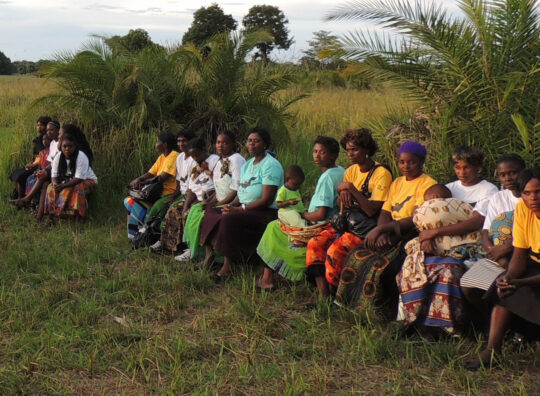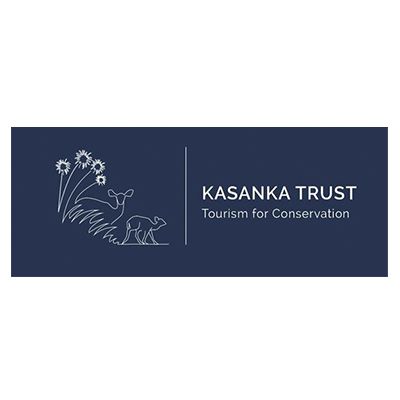Project Partner
KASANKA TRUST LTD
Project Summary
Kasanka National Park is a sanctuary for a wealth of African wildlife on the southwestern edge of the Lake Bangweulu basin and is one of Zambia’s smallest national parks. It is dominated by Miombo woodland but has pockets of rare habitat such as papyrus swamp, which is home to the world’s densest population of the rare Sitatunga antelope.
About thirty years ago, Kasanka’s wildlife had been plundered by poachers almost to the point of becoming yet another defunct national park. In 1987 British-born David Lloyd, the founder of Kasanka Trust, teamed up with a local farmer to rescue the park and its wildlife. Three years after the Trust was founded, National Parks and Wildlife Services handed over the management of the park to the Trust, and since then the park has gone from strength to strength.
Now the park has become a world-renowned safari destination, hosting the opportunity to not only witness the spectacle of ten million Straw-coloured Fruit Bats flying to their roosting forests over a magnificent African sunset, but also the chance to see rare antelope such as the Sitatunga, Sable and Puku.
The ecotourism aspect of the park, managed by the Trust, has been vital in securing funds for conservation projects and creating jobs which involve local communities in the protection of this important habitat.
However, poaching within the reserve is still a problem, which the Trust are fighting through local education programmes to involve communities and the younger generation, and with a dedicated team of patrolling rangers. WLT supports Kasanka’s ranger programme through the Keepers of the Wild fund.
Biome
Tropical & Subtropical Grasslands, Savanna.
Ecoregion
Central Zambezian wet miombo woodlands.
Habitats
Miombo woodland dominates the area comprising regularly burned chipya woodland alongside ecologically rich and threatened evergreen habitats of mateshe (dry) and mushitu (wet) forest. Amongst other habitats are high number of lakes (pans), plains, Cyperus papyrus swamps (termed “dambo”) and riparian forests alongside a streams and rivers (all tributaries of the Luwombwa River).
Method for Land Protection
Land acquisition, reserve management and community support.
Biodiversity
Kasanka NP supports a large number of species including 114 mammals, 480 birds, 58 reptiles, 41 amphibians and 66 fish.
It is the seasonal refuge to over 10 million Straw-coloured Fruit Bats, which congregate to feed on an abundance of fruit in this region and choose just a few trees deep within KNP to roost each day.
KNP is also home to a small population of African Elephant and African Buffalo as well as other locally rare species such as the semi-aquatic Sitatunga, Wattled Crane and Blue Monkey.
KNP is an important nesting and roosting site for 3 critically endangered vulture species – White Backed, Hooded, White-headed and one endangered vulture species – Lappet-faced Vulture.
Some of the rarer bird species that can be spotted in Kasanka include the Narina Trogon, African Broadbill, African Blue Quail, African Pitta, Fuelleborn’s Longclaw and African Finfoot.
Global Prioritization
Kasanka NP is a designated Important Bird Area and Key Biodiversity Area. The NP and parts of its buffer zone fall within the Greater Bangweulu Floodplain.

Main Threats to the Area
Poaching for bushmeat, fire and habitat transformation are all issues at Kasanka NP.
A growing human population surrounding the KNP Buffer Zone is putting further pressure on habitats as communities engage in charcoal making and unsustainable collection of other forest products (e.g. felling trees in order to harvest honey).
Image: A collection of snares removed from Kasanka by rangers on their regular patrols.

Local communities
Communities around Kasanka National Park’s buffer zone are from the Bemba-Lala tribe and are led by Chief Chitambo.
The main livelihood among communities around Kasanka is small-scale agriculture, with crops including maize, cassava and groundnuts. Harvesting of non-timber forest products (NTFPs) for subsistence use and/or sale is also highly important, in particular for caterpillars, as well wild fruits, mushrooms and honey. Areas proposed as CFMAs are largely intact woodland, with no permanent human settlement and very limited agriculture (<1% of the areas). Communities use these areas for collection of NTFPs and the establishment of CFMAs will ensure these practices are sustainably managed.
The Kasanka Trust employs staff from local communities for their community outreach programmes, which include the rangers in the Keepers of the Wild program, who join the Trust’s Education Officer on visits to local schools, sensitising pupils to local conservation issues. They also escort students from visiting schools on trips into the park to view the wildlife, particularly the bat migration.


